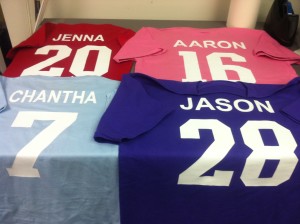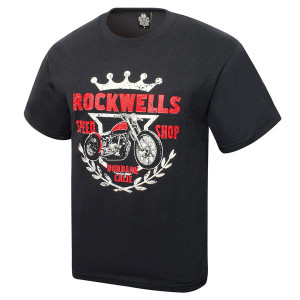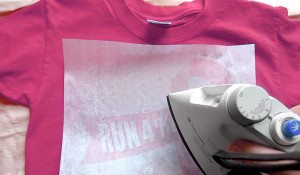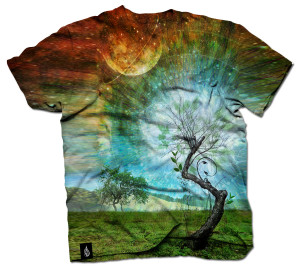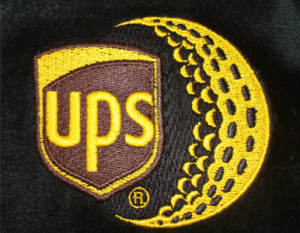How are custom t-shirts produced? I thought about this recently and did some research. I already knew most of the what I found but some of the information was new to me. I was surprised with the large number of printing options that are available.
Here are some to get you started:
Heat-Transfer Vinyl
For years, most of the t-shirts I saw were produced in a heat press by pressing a transfer sheet with a vinyl application against the t-shirt fabric. A plotter cuts out a design from separate sheets of colored vinyl. The shirt is placed on a platen to keep everything in place and the fabric flat, and the vinyl pieces are then arranged on the shirt. When the top of the heat press comes down onto the shirt and vinyl, the high temperature fuses the vinyl (which is coated with adhesive) to the shirt.
If you run your hand across it, you’ll feel the raised vinyl in the design. The vinyl just sits on top of the fabric it has been attached to, and has a bit of a rough finish because it does not become a part of the fabric.
Heat-transfer vinyl is usually durable when it is properly applied and does not crack or peel, even after the fabric has been washed many times. The vinyl itself might even outlast the t-shirt.
Pro: It is cheap to produce a very short print run (even 1 t-shirt). This is good for adding numbers to shirts (like sports jerseys).
Con: The graphic going on the t-shirt can’t have any gradients or halftones; you can only use single or multiple solid/ flat colours.
Screen Printing and Plastisol
Screen printed ink has a sturdy feel to it and is durable. The ink sits on the surface of the t-shirt and also seeps into the fabric.
Because it involves a process using a computer, light-sensitive emulsions, and chemicals, you can create graphics that have gradients and halftones. When it comes to design flexibility, screen printing is ahead of heat-transfer vinyl.
The only problem with this is that it’s an expensive process that involves a lot of work to prepare the screens for the printing. As a result of this, only a long press run can be done (you wouldn’t choose this method for 1 or 2 shirts).
On another note, you can create the screen print look with pre-screened plastisol inks applied to transfer sheets. Basically, this is a screen printed image produced on a paper liner, which you then affix to the shirt using a heat press (high temperature combined with high pressure).
One of the benefits of such a process is that you can either buy or produce a number of screen printed transfer sheets and then affix them one at a time to the t-shirts. This gives you the ability to stock fewer blank shirts and print them as needed, choosing the proper sized shirt for the customer (rather than keeping all screen printed t-shirt sizes and all colors in stock).
In addition to traditional 4-color printing, plastisol transfers are good for glitter, foil, puff, and sparkle printing.
Pro: The screen printed product is durable. Like transfer vinyl, the screen printed image may even outlast the t-shirt.
Con: Screen printing the transfer sheets takes time since it is usually a subcontracted operation.
Inkjet- and Laser-Printed T-Shirts
You can make these with you inkjet printer or laser printer. The process involves printing the image onto a transfer sheet with ink or toner, and then you transfer the image to the shirt by means of heat — you can use a heat press but in most cases people just use an iron (they are also called iron-on transfers).
If you turn the shirt inside-out and wash it in cold water the first couple of times, it should last quite a while. But don’t expect it last as long; it’s not as durable as screen printed t-shirts or heat-transfer vinyl t-shirts. Nevertheless, it’s very easy to produce and transfer the art for the shirt, and every image can be different.
Pro: This is a great option for a short print run. For a family get-together, for instance, when the t-shirt just needs to last for the one event, this process may be ideal. And compared to the other options, it’s cheap and immediate.
Con: The art comes out looking boxy on the shirt.a boxy appearance of the art (an 8.5″ x 11″ rectangle in the center of the shirt). You can avoid this by cutting the transfer sheet around the printed image to give it an irregular border.
Inkjet- and laser-printed t-shirts also have a plastic-like feel compared to some of the other options.
Dye Sublimation
For the brilliant colors it yields, this has become my favorite option.
Basically, an image is inkjetted onto a paper transfer sheet using special dyes (instead of ink). The press operator then puts the shirt on the platen in the heat press, puts the transfer sheet on top, and closes the heat press. The heat and pressure then turn the printed ink in the transfer paper into a gas that travels into the fibers of the t-shirt and actually becomes part of the shirt. (That is, the ink sublimates directly from a solid to a gas without first becoming a liquid.)
If you look at the transfer sheet prior to the sublimation process, the dye colors won’t seem as brilliant as they will after sublimation and transfer into the fabric. The process intensifies the hues and makes them stunning.
The feel of a dye sublimated product is particularly soft, since the image has become a part of the fabric. This also accounts for its durability.
Since this is a digital process, you can make a press run of one copy or a thousand copies. And each one can be different.
Unlike heat-transfer vinyl, this process can achieve stunning gradients and halftones with a very fine level of detail. Even screen printing could not match the fineness of the dye-sub gradient screen due to the thickness of screen printing inks compared to the much thinner dye-sub dies.
Keep in mind, though, that the process lends itself to fabrics with at least a 65 percent polyester content rather than to cotton fabrics. Shirts must also be of light, rather than dark, material. The supplies are also expensive, and the learning curve to operate the equipment is high.
Embroidery
It’s not a printing method, but it is an elegant and durable option for decorating a t-shirt (or a hat or even a messenger bag). It is usually used for a more formal shirt like a polo shirt (and not a t-shirt).
Basically the method involves using thread to create the design, usually on a sewing machine run by a computer to automatically sew the logo, pattern, or image into the fabric. It has even more depth than screen printed ink, and is hard-wearing.



